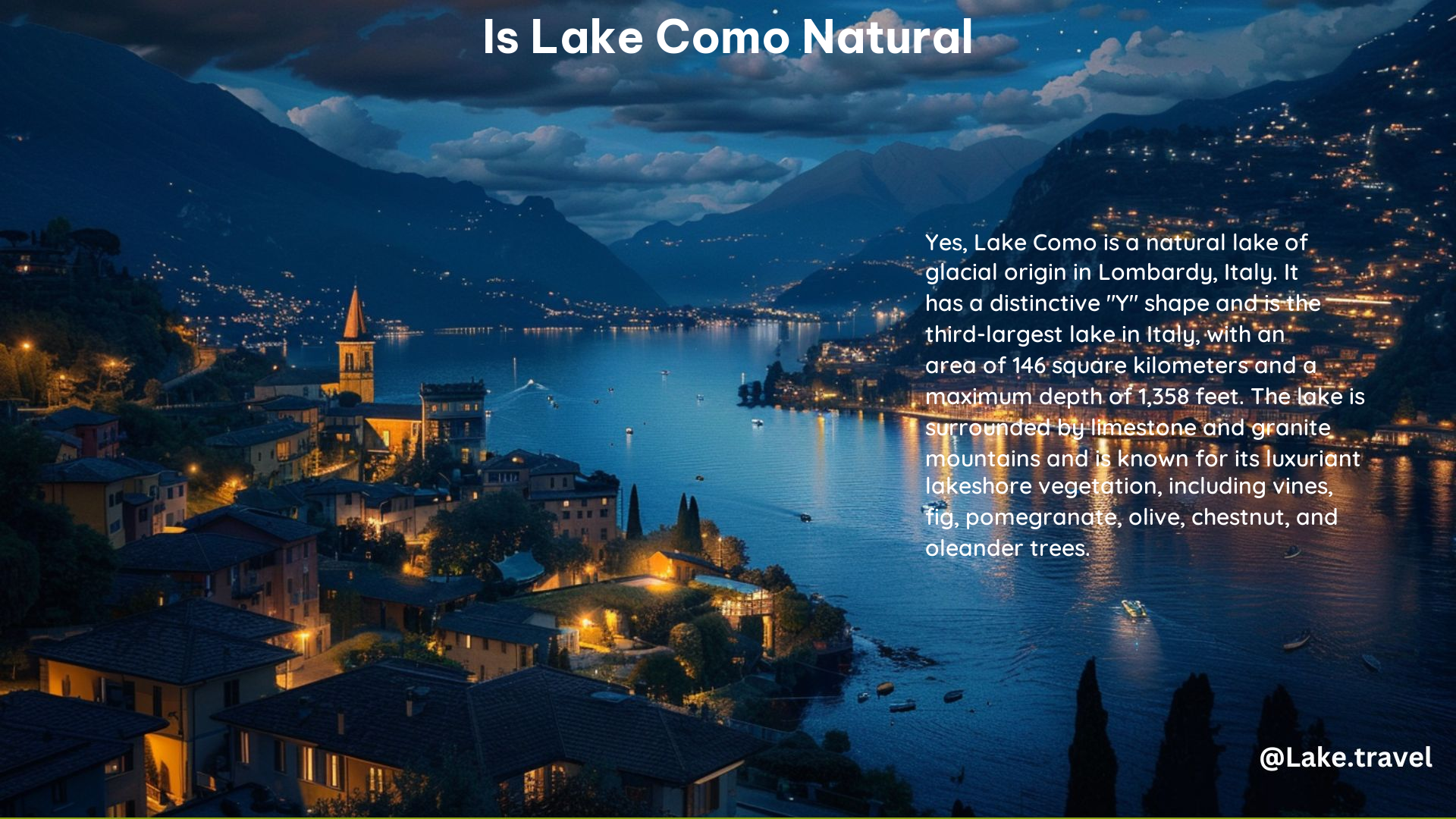Yes, Lake Como is a natural lake of glacial origin located in Lombardy, Italy. It is the third-largest lake in Italy and the fifth-deepest lake in Europe, with a maximum depth of 1,358 feet (414 meters). The lake is situated in a depression surrounded by limestone and granite mountains, which reach elevations of up to 8,000 feet (2,400 meters) in the northeast.
The Natural Beauty of Lake Como
Lake Como’s natural beauty is characterized by its luxuriant lakeshore vegetation, including vines, fig, pomegranate, olive, chestnut, and oleander trees. The lake is also known for its picturesque towns and villages, such as Como, Lecco, Bellagio, and Varenna, which are connected by steamer services.
Diverse Wildlife and Habitats
The lake’s natural environment supports a variety of wildlife, including fish species like trout, eel, and agoni (a type of herring), although pollution has reduced the fish population. Additionally, Lake Como is home to several protected natural areas, including the Pian di Spagna and Lake Mezzola Natural Reserve, the Spina Verde Regional Park, the Albano Valley and Adda River Natural Reserve, and the Northern Grigna Regional Park, which provide habitats for various species of flora and fauna.
The Natural Climate of Lake Como

Lake Como’s natural climate is classified as humid subtropical, with mild winters, pleasant springs and autumns, and hot summers. The lake’s water temperature reaches an average of 26°C (79°F) in July, making it suitable for swimming and water activities.
Geological Formation
Lake Como was formed during the last ice age, when glaciers carved out the deep valley that the lake now occupies. The lake’s distinctive shape, with its three main branches (Como, Lecco, and Colico), is the result of the glacial activity that shaped the landscape.
Glacial Erosion and Deposition
The glaciers that formed Lake Como eroded the underlying rock, creating a deep, U-shaped valley. As the glaciers retreated, they left behind deposits of glacial till and moraine, which now form the lake’s shoreline and surrounding hills.
Tectonic Activity
The Lake Como basin is also influenced by tectonic activity, as the region is located along the boundary between the African and Eurasian tectonic plates. This ongoing geological movement has contributed to the lake’s steep, mountainous terrain and the formation of the surrounding Alps.
Protecting the Natural Environment
To preserve the natural beauty and biodiversity of Lake Como, several protected areas have been established around the lake. These include:
| Protected Area | Description |
|---|---|
| Pian di Spagna and Lake Mezzola Natural Reserve | Protects the wetlands and habitats at the northern end of Lake Como |
| Spina Verde Regional Park | Preserves the forested hills and valleys on the western shore of the lake |
| Albano Valley and Adda River Natural Reserve | Safeguards the natural habitats along the Adda River, which flows into Lake Como |
| Northern Grigna Regional Park | Protects the rugged, mountainous terrain and alpine ecosystems on the eastern shore of the lake |
These protected areas help to maintain the delicate balance of the lake’s natural ecosystems, ensuring that the unique flora and fauna of Lake Como can continue to thrive.
Conclusion
In conclusion, Lake Como is a natural wonder, renowned for its breathtaking beauty, rich biodiversity, and unique cultural heritage. Its glacial origins, diverse wildlife, and protected natural areas make it a truly remarkable destination for nature enthusiasts and outdoor lovers alike.
Reference:
– Lake Como – Wikipedia
– Lake Como – Britannica
– Lake Como – National Geographic
